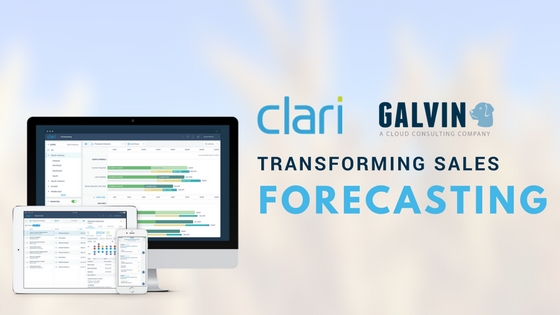Part I: A Project Manager’s Challenge: Delivering a Solution That is Not in Your Toolbox
We would like to introduce a new series on the Galvin Blog in which our senior project manager, Crissy Koger, shares her approach to overcoming a seemingly common yet difficult challenge in project management. We hope that you enjoy Part I of III.

Every project manager knows that with any project that falls outside his or her comfort zone, it induces a level of unavoidable risk. Some project managers thrive on this risk and are able to haphazardly proceed with flying colors. On the other hand, some project managers buckle under the pressure and are not able to deliver a sound solution to the client. There are some project managers, however, who are able to navigate through this risk and achieve a balance that allows them to understand, accept, and manage this risk.
As the senior project manager at Galvin, I identify with the latter pool of project managers. I do not mind the risk that comes with uncharted territory; it keeps me on my toes and pushes me to think critically and creatively in bigger and better ways. However, it is important for me to understand what it is exactly it is I am getting into before any decisions are made.
The Challenge
Most recently, I ran up against this unfortunate predicament: our client needed a solution in which the time and budget did not allow for us to be able to utilize the best of our internal resources to develop a fully-customized software solution. Thus began my challenge to discover how to deliver an end result that would be able to exceed the client’s expectations while being considerate of a strict timeline and budget. To ensure that I am leading the client down the right path, I rely on the following four tips, which have proven to be useful in such challenging situations.
Stay Positive and Confident
When faced with a project that forces you out of your comfort zone, it is especially important to remember to stay positive. The fear that stems from the unknown, especially in projects where it is hard to visualize the end result, is understandable. It is also natural to feel anxious in these fearful situations, but a project manager must be able to push all of this aside. Instead of catering to fear, the project manager needs to actively maintain a positive attitude that instills confidence in all the project stakeholders. If you believe it can be done, it will be done. Sometimes it is a matter of simply saying, “Yes, we will deliver the right solution.” Say it a few times and suddenly, the project seems easier to tackle.
Realign Client Expectations
Your first interaction with the client after the project has been signed off is absolutely critical. I always take this moment to realign the client’s expectations, especially in cases such as this where the risk is high, the budget is tight, and the schedule is strict. Although the client is dead-set on a certain solution, sometimes there are requirements that were not initially identified that need to be discussed. Likewise, sometimes there are requirements that need to be carefully reviewed to ensure that each one can be properly met. If I am up against requirements that just will not work, then this is the time in which I employ the art of compromise. From my experiences as a project manager, I believe that compromise is necessary in order to swim outside the box to find the buried treasure. Not only does it show the client that you understand what it is they need, but it also enforces the message that they are in good hands.
Research, Research, Research
A project of high-risk cannot be delivered successfully without doing a fair amount of research and development. To find a solution that would fit within the restricted budget and timeline, I needed to look beyond our internal resources and to third-party sources. Based on the client’s expectations and project requirements, I researched viable options and then was able to created informative documentation to present to the client. Not only did the presentation generate valuable feedback, but it allowed me to narrow my selection of 5 to 6 solutions down to 3 and 4. Although it does feel encouraging knowing that we are on track to finding “the one”, there is still that nagging feeling that I need to make the best decision, the one that will give the client a bigger bang for their buck. However, I remain positive that our understanding of the project’s requirements will allow us to make the most educated decision that will deliver a solution that generously exceeds the client’s expectations.
Keep Your Salesman Close
Last but not least, I make sure to keep my salesman – the one who approached the client with a solution in mind– as close as I can. As a project manager, it is important to do so for several reasons. If you cannot realign the expectations with the client during your first interaction, then it is time to call on your salesman to redefine the client’s expectations and project’s requirements. Likewise, if the solutions you have presented are not what the client wanted or expected, then it is necessary to call on that relationship between Sales and The Client to determine how to proceed. I trust that this relationship will encourage the client to compromise and accept a solution that I know will not only meet their needs, but I know that we can (and will) deliver.
The Next Step
Now that the client has narrowed the solutions down to 3 and 4, I am preparing to present a more detailed overview of these options to show how each one satisfies the project’s requirements. Because of the timeline and budget, soon I will need to go ahead and pull the trigger. In other words, I will need to make an informed decision to proceed with a third-party solution so we can begin the development process. Even though making this decision has proven difficult, I know that the worst is still not over; there is a timeline and budget that my team and I will need to be deeply considerate of until the very end.
Despite the fact that this particular project fell outside my comfort zone as a project manager, I welcomed the opportunity to learn and think more critically and creatively during the discovery process. Likewise, I appreciate the experience of this challenge, which I know will serve as valuable knowledge when similar projects fall under the umbrella of my management in the future. I have the utmost confidence that I am leading the client down the right path and that we will deliver the right solution on time and within budget, as promised.
Stayed tuned for Part II: The Challenges of the Development Process and Managing a Remote Team, in which Crissy discusses how “the one” solution was finally selected, how the team proceeded into the development phase, and how she handled the challenges of managing the project and its external resources, tight budget, and strict schedule.












